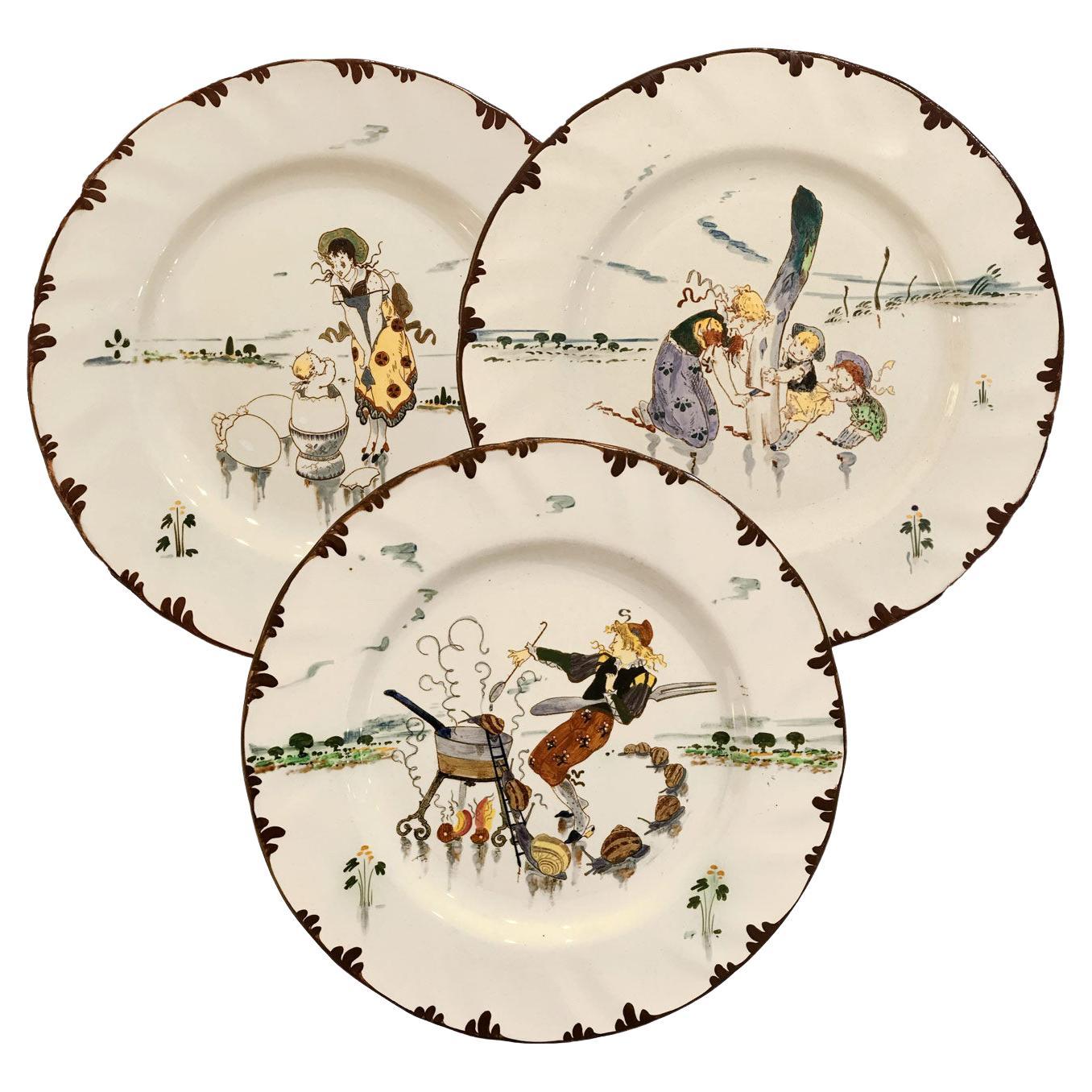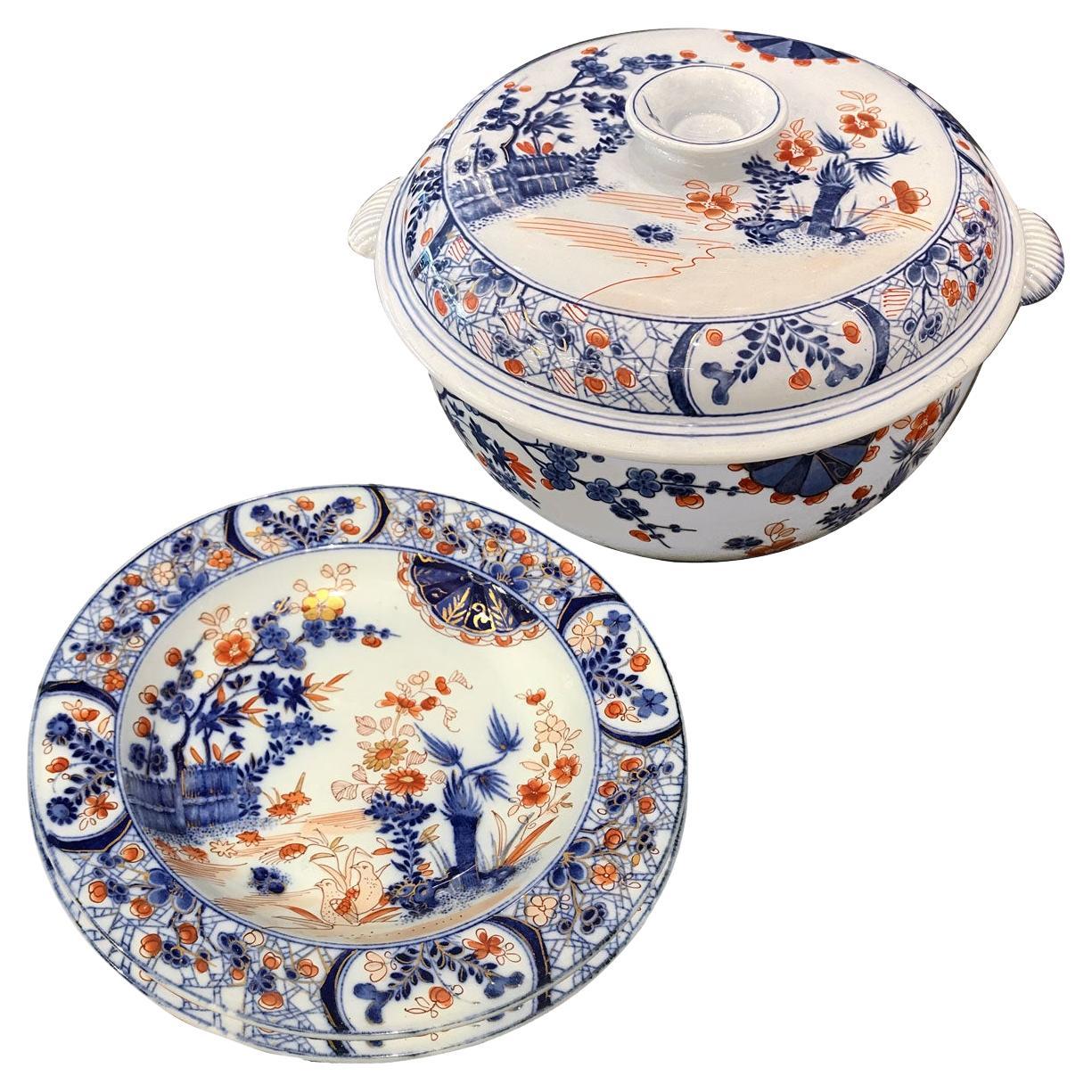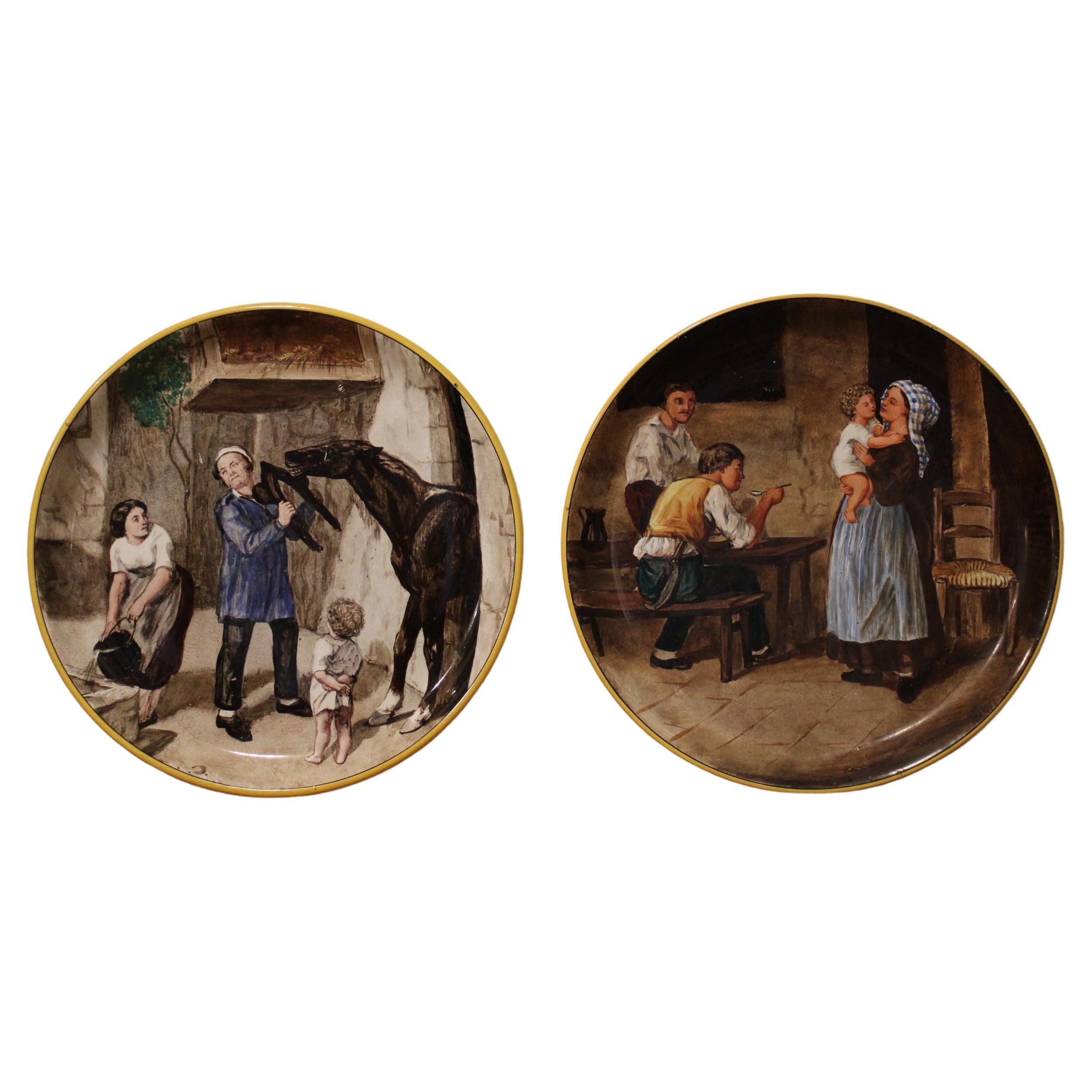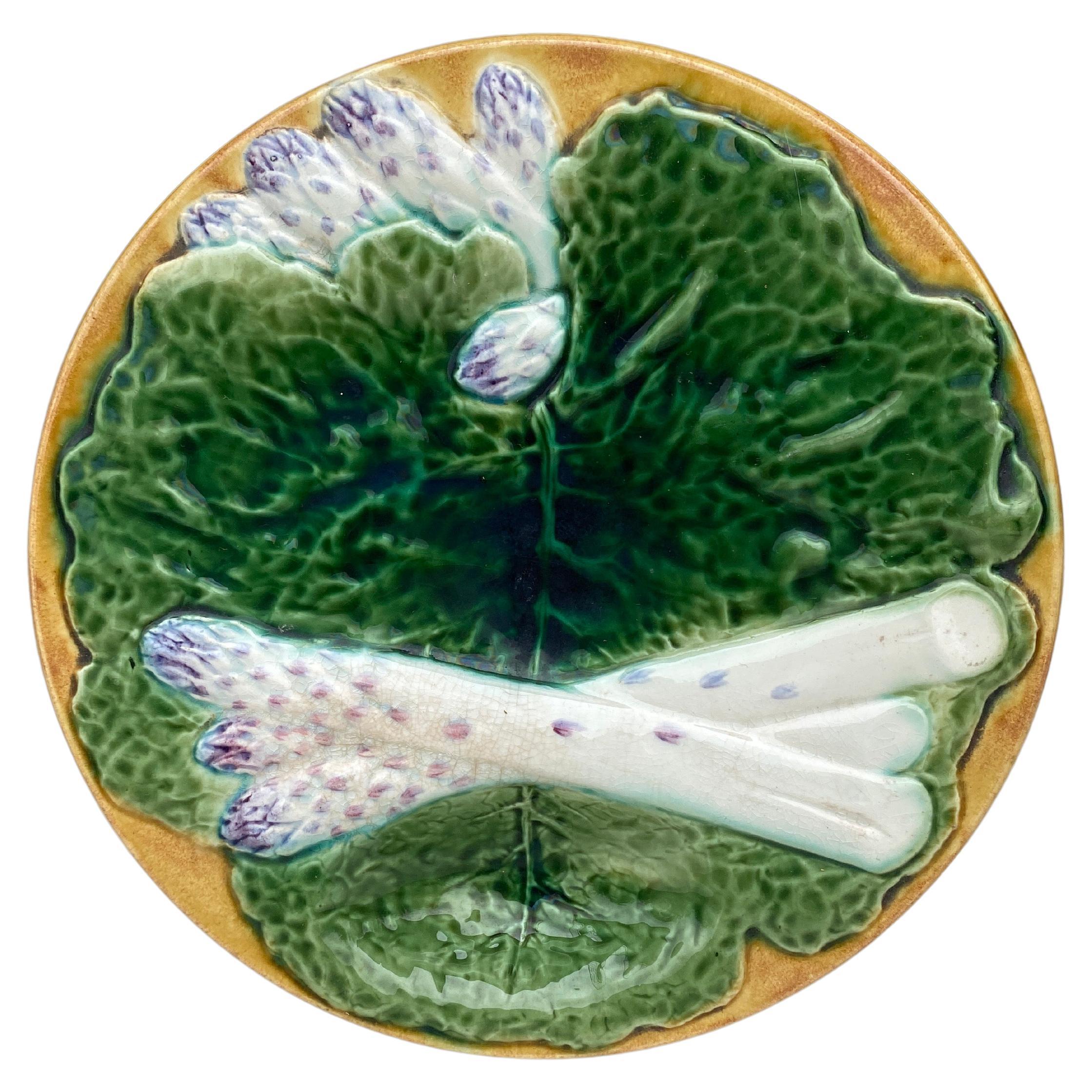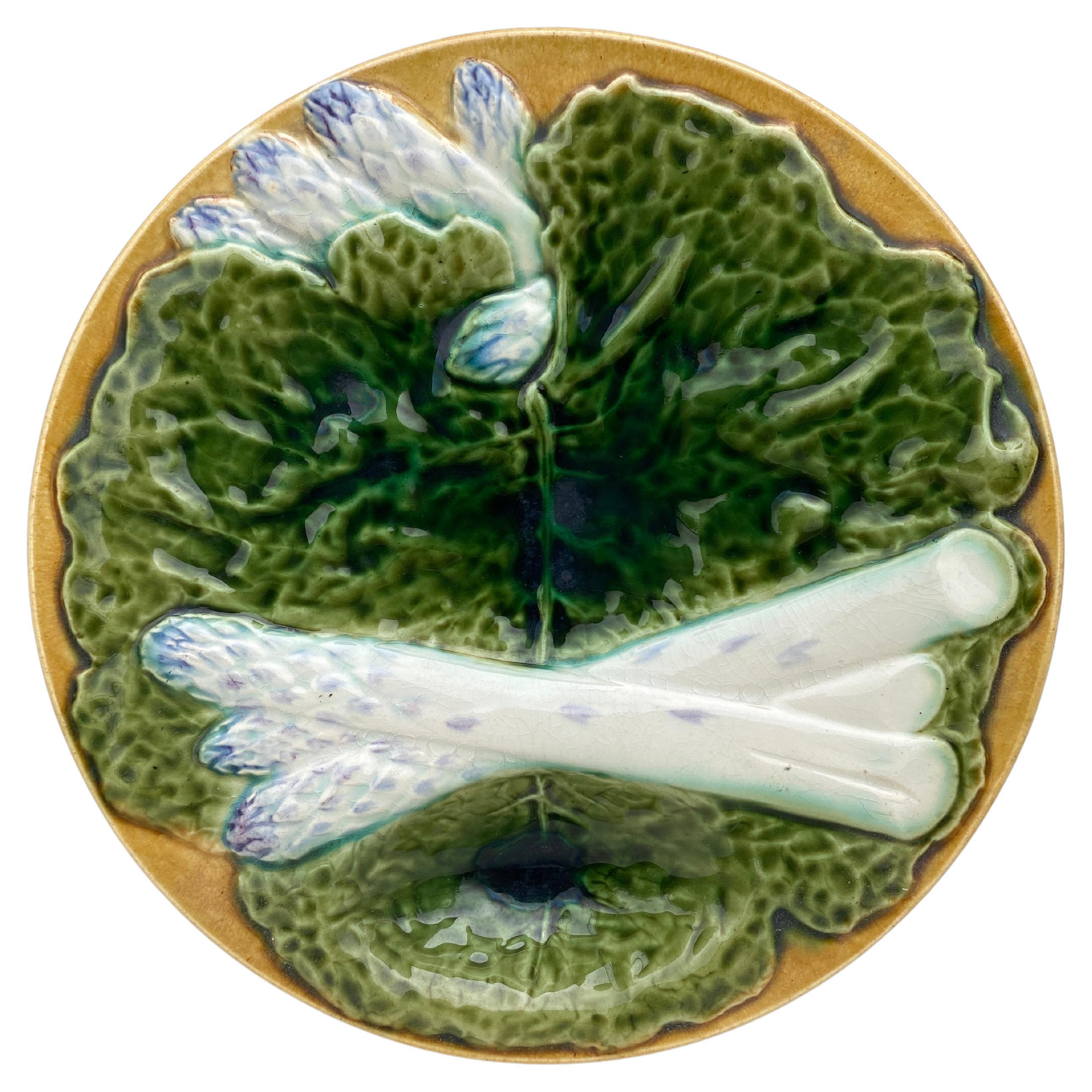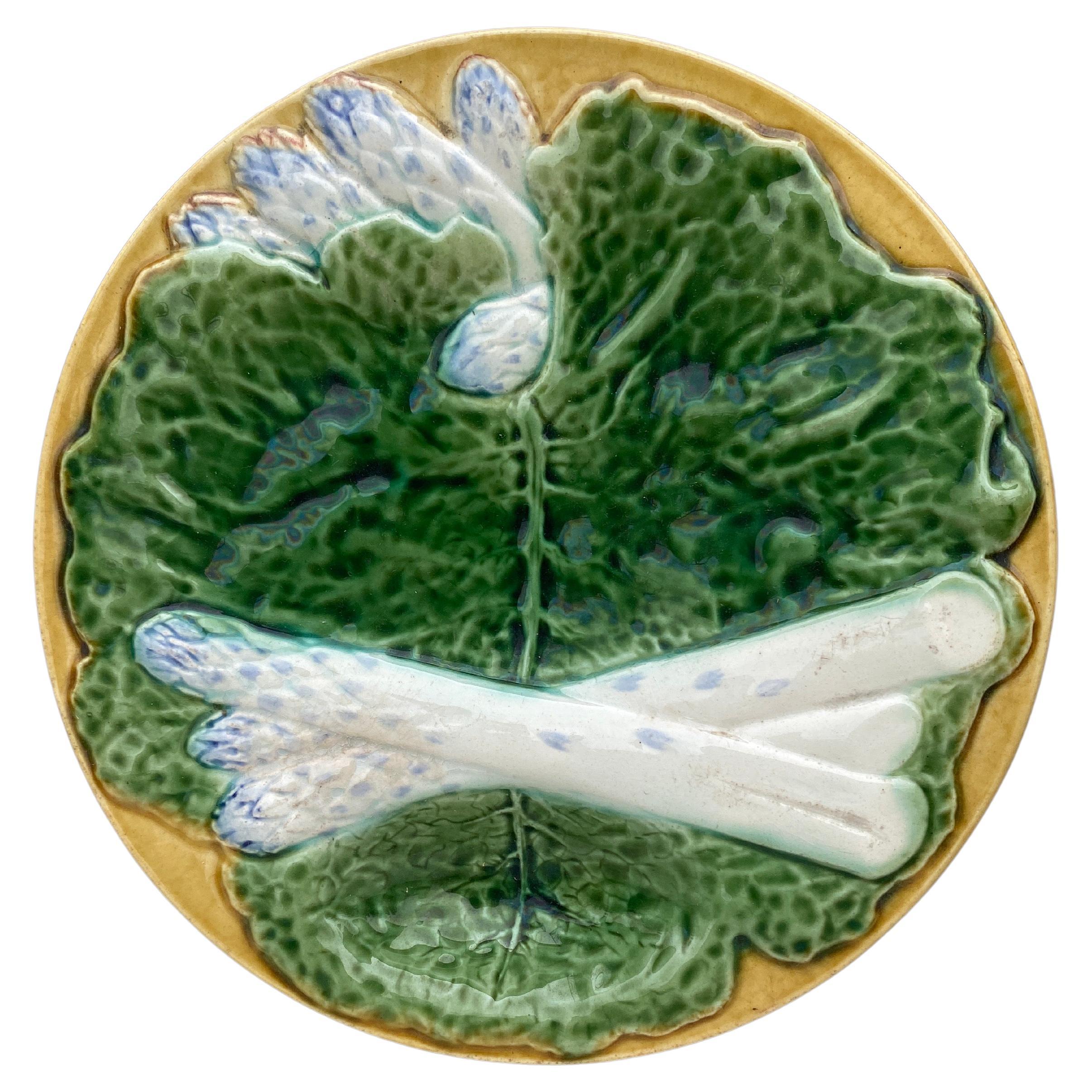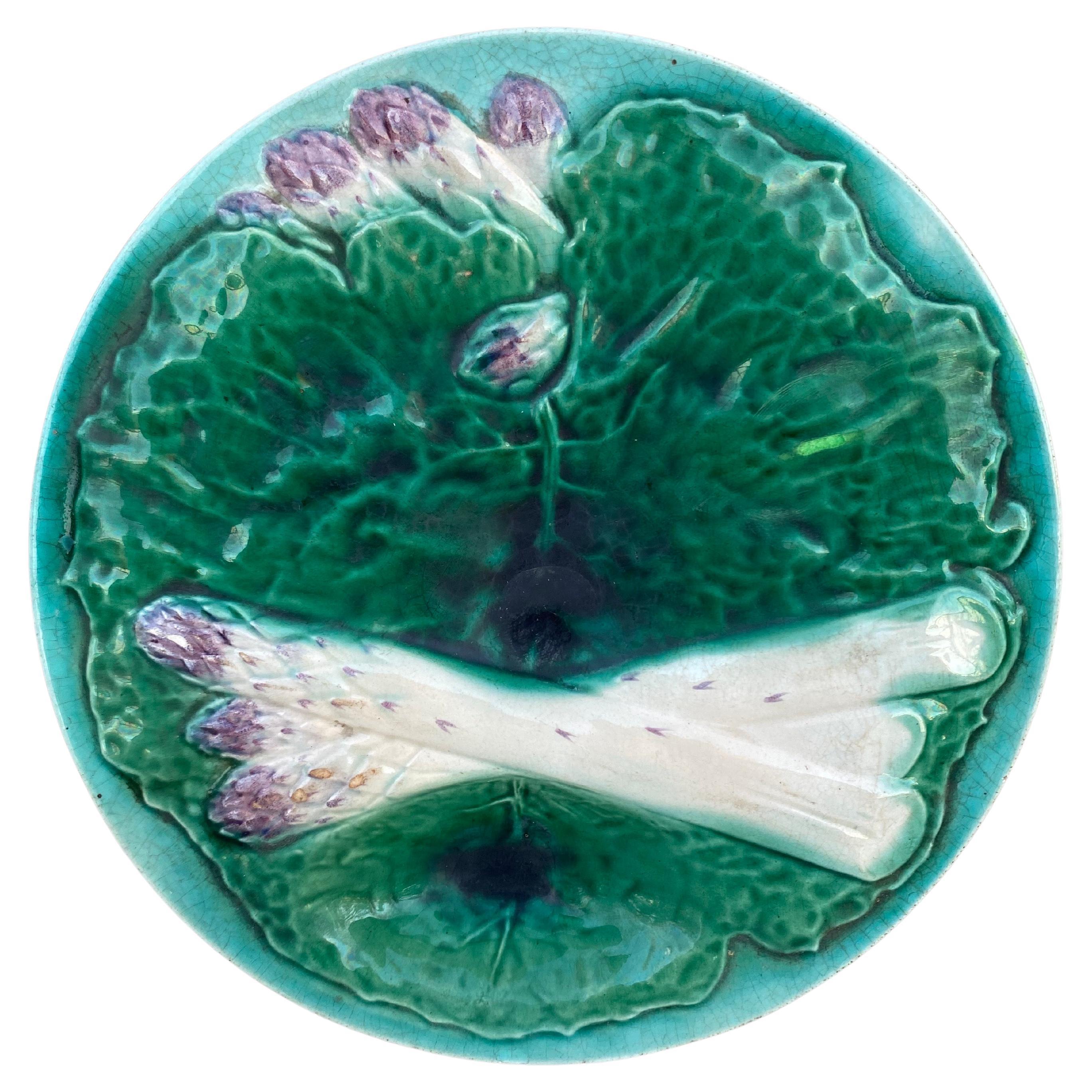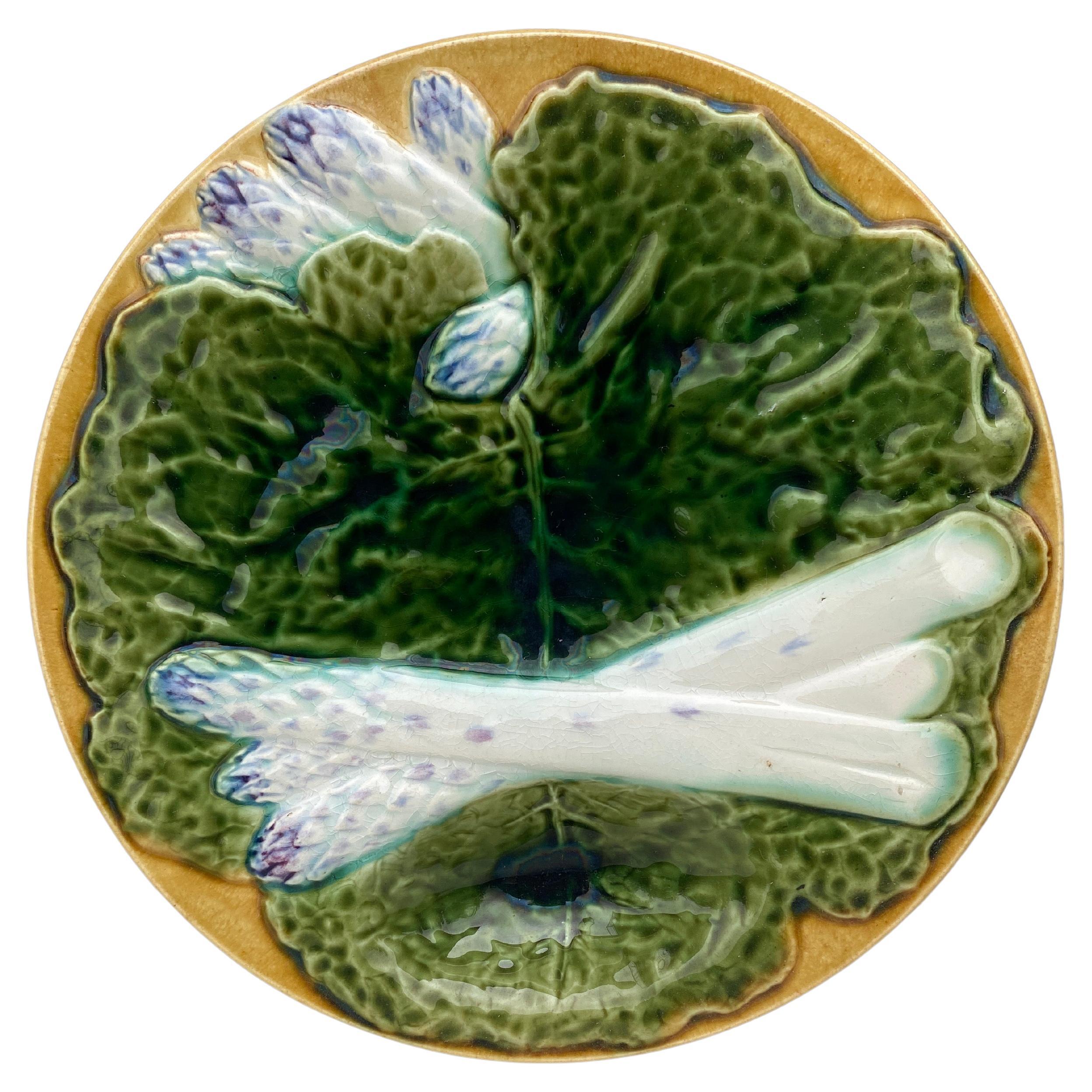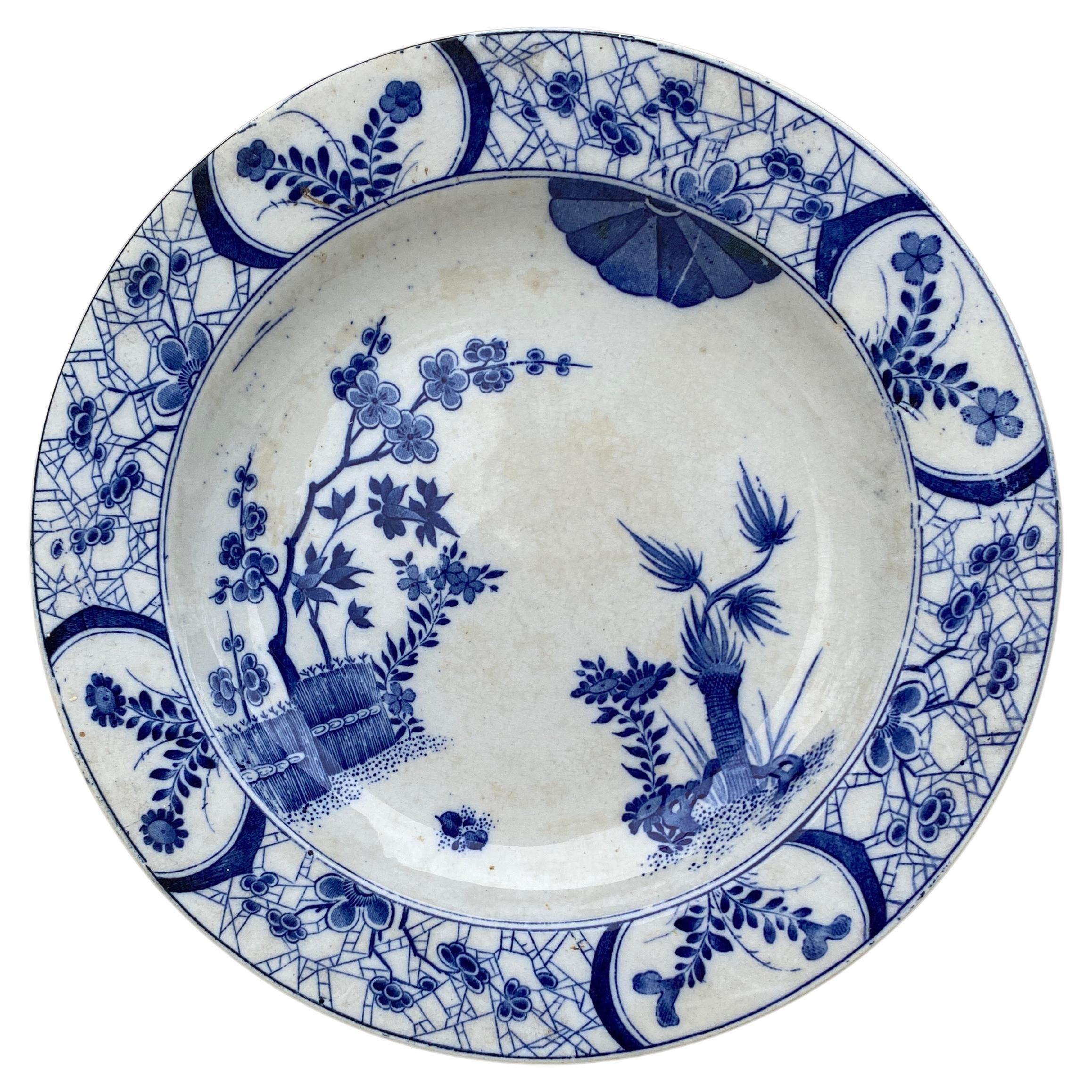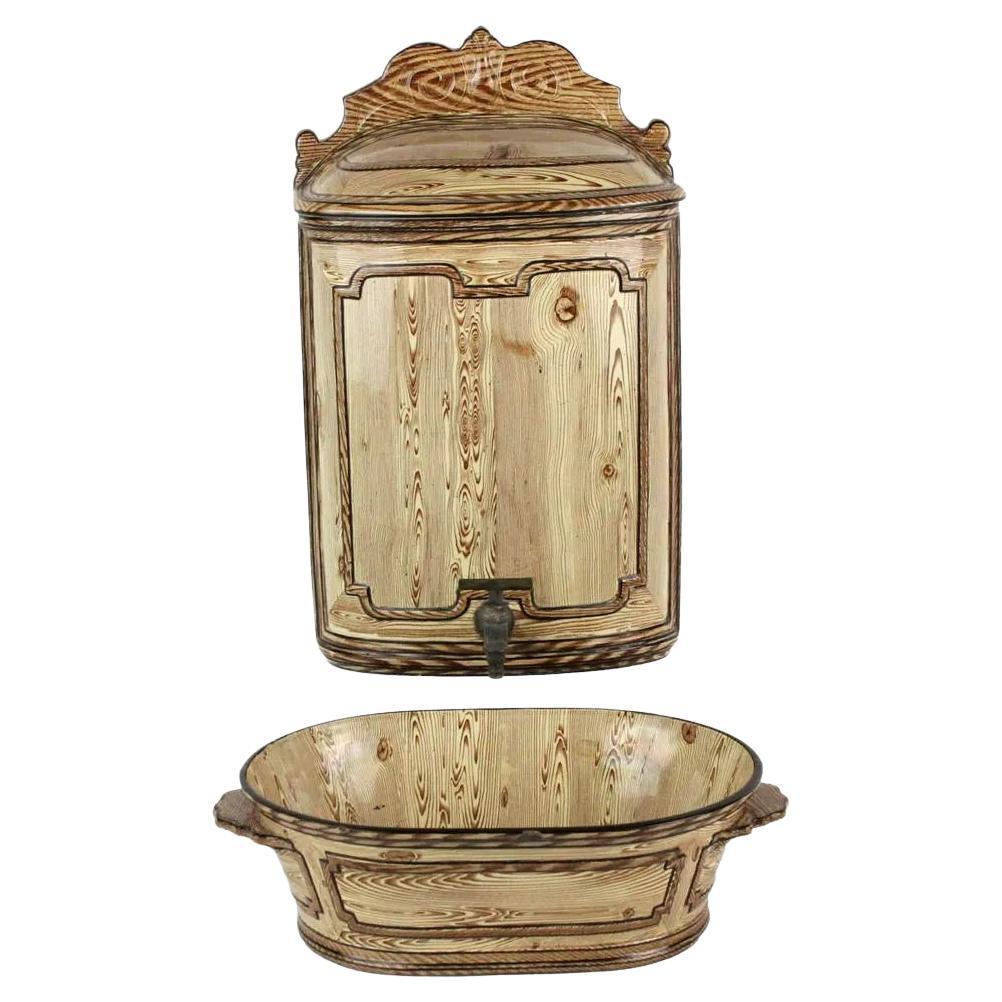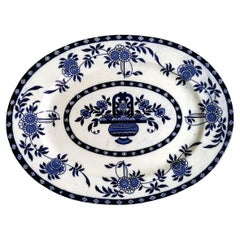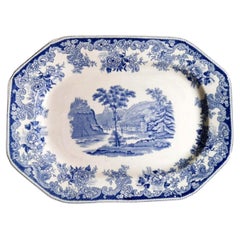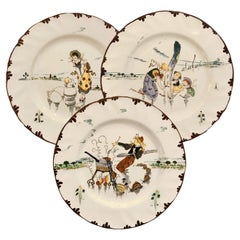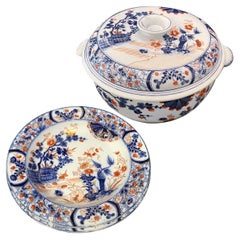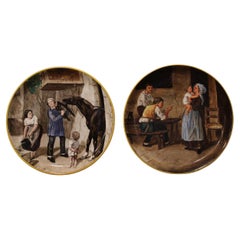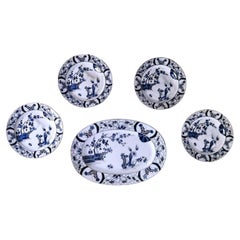
Creil Montereau Mod. "Japon" Set of 4 French Dinner Plates with Sauces and Tray
View Similar Items
Want more images or videos?
Request additional images or videos from the seller
1 of 21
Creil Montereau Mod. "Japon" Set of 4 French Dinner Plates with Sauces and Tray
About the Item
- Creator:Creil et Montereau (Maker)
- Dimensions:Height: 1.58 in (4 cm)Width: 16.54 in (42 cm)Depth: 11.42 in (29 cm)
- Sold As:Set of 5
- Style:Japonisme (In the Style Of)
- Materials and Techniques:
- Place of Origin:
- Period:
- Date of Manufacture:1890-1895
- Condition:Wear consistent with age and use. The items are in good condition, only under one plate there is a small chip (see photo).
- Seller Location:Prato, IT
- Reference Number:1stDibs: LU4632231754072
About the Seller
5.0
Gold Seller
These expertly vetted sellers are highly rated and consistently exceed customer expectations.
Established in 1977
1stDibs seller since 2019
235 sales on 1stDibs
Typical response time: 2 hours
More From This SellerView All
- Deruta Italy Set 5 Ceramic Plates with Cobalt Blue DecorationsLocated in Prato, TuscanyWe kindly suggest you read the whole description, because with it we try to give you detailed technical and historical information to guarantee the authenticity of our objects. Set of five charming ceramic plates with rich cobalt blue decorations on a white background; three plates have a diameter of cm.30 and are the two with both painted on the bottom a little bird surrounded by flowers and vine shoots but with different border decorations, the other is the one with a star painted in the center and a flowery border; the other two have a diameter of cm.33 and have a pomegranate design in the center surrounded by vine shoots, both again with different borders. They were all painted exclusively by hand and faithfully reproduce ancient Umbrian decorations from the 1700s; made between 1950 and 1954 in a small artisan workshop in Deruta (Perugia-Italy). The ceramic mixture is coarse (see photos of the back of the plates) characteristic of Deruta ceramics...Category
Mid-20th Century Italian Neoclassical Revival Ceramics
MaterialsCeramic
- Staffordshire Potteries English Tray with Blue Transferware DecorationsBy Clementson BrothersLocated in Prato, TuscanyWe kindly suggest you read the whole description, because with it we try to give you detailed technical and historical information to guarantee the authenticity of our objects. Lovely and refined English oval ceramic tray; elegant and rich blue decorations have been executed on the white background using the transferware method; the mark on the back tells us exactly that the object was produced by the Clementson Brothers LTD Company between 1901 and 1913 at the Phoenix factory in Shelton, the company made a wide range of objects with this decoration called "Delf" ( see mark no.909 p.150 of "Encyclopaedia of British Pottery and Porcelain Mark"). Transferware, which was very fashionable in the Victorian period, refers to glazed and decorated pottery with a specific treatment that they produced in Staffordshire, England; they used copper plates on which the design was engraved, the plate was then inked and the design transferred to a special fabric that was later placed on the pottery (plates, trays, tureens, etc.) which was glazed and fired; the first to use this printing process were John Sadler and Guy Green of Liverpool in 1756. If we look at the pottery made by this method we will notice that the designs are not perfect and often the ink is smudged: this is their characteristic. A hand-painted plate service could afford few English families, with this method even middle-class families could have a decorated plate service. The Clementson Firm was founded in 1839 by Joseph Clementson, who retired from the business in 1867, leaving the factory to his four sons and son...Category
Early 20th Century British Victorian Ceramics
MaterialsCeramic
- Copeland-Spode English Tray with Blue Transferware DecorationsBy Copeland SpodeLocated in Prato, TuscanyWe kindly suggest you read the whole description, because with it we try to give you detailed technical and historical information to guarantee the authenticity of our objects. Elegant and refined English octagonal ceramic tray; on the white background, soft and rich blue decorations have been executed using the transferware method; in the center we find the poetic and graceful representation of the Severn River and the town of Bridgnorth (the name of this decoration is "Severn"), while the edges of the tray are adorned with sumptuous and spectacular flower and leaf decorations. The Severn River is the longest river in the United Kingdom (350 km), rising in Wales and flowing into the Bristol Channel; Bridgnorth is an ancient Saxon settlement; observing the view of the river and town from his castle at Bridgnorth King Charles I Stuart (1600-1649) said "the most beautiful sight in all my kingdom". On the back of the tray there are 3 imprinted marks including one with final number 14, then we find in the center a blue mark, these indicate to us exactly that the tray was produced in Stoke-on-Trent by the Copeland-Spode company in 1914 (see mark no.1079 p.172 of "Encyclopaedia of British Pottery and Porcelain Mark). The Spode firm was founded in the heart of the Potteries - Stoke-on-Trent by Josiah Spode in 1770. Josiah Spode is most famous for developing the specific design technique that meant underglaze transfers could be printed on earthenware. Later, focusing on porcelain production, Josiah Spode pioneered the development of a new form of porcelain, originally called "Stoke China...Category
Early 20th Century British Victorian Ceramics
MaterialsCeramic
- Deruta Italian Ceramic Set Three Hand Painted Wall PlatesBy DerutaLocated in Prato, TuscanyWe kindly suggest you read the whole description, because with it we try to give you detailed technical and historical information to guarantee the authenticity of our objects. Three delightful and colorful round ceramic wall plates; they were created completely by hand between 1965 and 1968 by a small artisan workshop in Deruta (Perugia, Italy) respecting ancient traditions and raw materials; clay, enamel, colors, water, fire and the hands of the artist: these are the simple elements that lead to the creation of a ceramic article; on the back they have two holes so they can be hung on the wall; they represent characters in Renaissance clothing, each in a different pose: the first is a swordsman who wields a special weapon of the time the "side sword" with S-shaped guard and a dagger with guard very elaborate, useful to trap the blade of the opponent; the "spada da lato" (side sword) is that elegant and handy sword that, from the second half of the fifteenth century and throughout the sixteenth century, is worn on the belt by nobles or rich, a weapon designed for self-defense or to be used in a duel; In fact the second plate represents just a duel in which the two contenders always use "swords side", the one on the left also has a small shield and the one on the right wields an effective and perfidiously fast double-edged dagger; In the third plate is painted a "naccarino" who plays a cylindrical drum (similar to those spread by the Lanzichenecchi from the fifteenth-sixteenth century) held on the side and beaten with two sticks, the "naccarini" were players of small instruments whose presence was required every time you had to give particular solemnity to a public event. We don't know why the people of Deruta began to work the terracotta and to produce vases and manufactured articles in ceramics but we know with all certainty that already in the Middle Ages the city was known for the production of ceramics of high quality, the first written sources make to date the ceramics of Deruta (Perugia) to 1282. In the Renaissance, they were active to Deruta more than fifty furnaces with which they collaborated artists like the Perugino, the Pinturicchio, and Luca Signorelli. The mastery of the artisans and artists of Deruta ceramics...Category
Mid-20th Century Italian Medieval Ceramics
MaterialsCeramic
$528 Sale Price / set20% Off - Victorian Style Set 4 English Plates Transferware Decorations Royal Arms MarkLocated in Prato, TuscanyWe kindly suggest you read the whole description, as with it we try to give you detailed technical and historical information to guarantee the authenticity of our items. Refined and ...Category
Antique Mid-19th Century British Victorian Ceramics
MaterialsCeramic
- Rockabilly Style French Centrepiece Red and Black CeramicLocated in Prato, TuscanyWe kindly suggest you read the whole description, because with it we try to give you detailed technical and historical information to guarantee the authenticity of our objects. Red and black ceramic table centerpiece made in Rockabilly style, the colors are strong and decisive, the black has the distinction of having beautiful reflections nacreè (mother of pearl), reflections that unfortunately the photos can not capture, from life are really seductive, the form is nicely undulating, pleasant and very capacious; the centerpiece was produced between 1950 and 1953, by skilled artisans in the area of Vallauris, the "French city of ceramics" in Provence north-east of Cannes, renowned since ancient times for the production of this fascinating material; there were more than 250 production centers, but today very few remain and since the mid-20th century, they are dedicated to the manufacture of contemporary ceramics. The word "Rockabilly" is a combination of "rock and roll" and "hillbilly" (a derogatory term used to define the Appalachian mountain people and, in a generic sense, meant country boor); Rockabilly was a musical genre developed in the early 1950s, it was one of the first forms of rock & roll. It was a fusion of bluegrass, country, boogie-woogie, and jazz, originally from the southern United States, and was played and sung by artists such as Buddy Holly...Category
Mid-20th Century French Modern Ceramics
MaterialsCeramic
$600 Sale Price20% Off
You May Also Like
- Dinner Plates Hand Painted by Froment-Richard for Creil & MontereauBy Creil et MontereauLocated in Paris, FRTable set for 12 people "Le Parisien" by Creil & montereau. 12 patterns with children playing with vegetables, eggs, frogs, nuts, snails etc. Stamped in the back with Creil & Montere...Category
Antique Late 19th Century French Ceramics
MaterialsCeramic
- Luxury 60 Pcs Service "Japon" Imari Know as "Monet" Creil & Montereau 19thBy Creil et MontereauLocated in Paris, FR"Japon" Imari service, produced in 1876 by the Creil & Montereau pottery, shows the great success of Japonism in tableware production, like the Bracquemo...Category
Antique Late 19th Century French Japonisme Tableware
MaterialsGold
- Pair of Earthenware Plates, Creil Et Montereau Manufacturer, France 19th CenturyBy Creil et MontereauLocated in Paris, FRPair of ceramic plates Earthenware from Creil-Montereau, in France Mark "Creil et Montereau, L.M & Cie" under the base Late 19th century.Category
Antique 19th Century French Ceramics
MaterialsCeramic, Earthenware
- 19th Century Majolica Asparagus Plate with Cabbage Leaves Creil & MontereauBy Creil et MontereauLocated in Austin, TXUnusual 19th century majolica asparagus plates with large green cabbages leaves on a yellow background (usually on blue background), very colorful plates made by the Manufacture of Creil and Montereau...Category
Antique 1880s French Country Dinner Plates
MaterialsMajolica
- 19th Century Majolica Asparagus Plate with Cabbage Leaves Creil & MontereauBy Creil et MontereauLocated in Austin, TXUnusual 19th century majolica asparagus plates with large green cabbages leaves on a yellow background (usually on blue background), very colorful plates...Category
Antique 1880s French Country Dinner Plates
MaterialsMajolica
- 19th Century Majolica Asparagus Plate with Cabbage Leaves Creil & MontereauBy Creil et MontereauLocated in Austin, TXUnusual 19th century majolica asparagus plates with large green cabbages leaves on a yellow background (usually on blue background), very colorful plates...Category
Antique 1880s French Country Dinner Plates
MaterialsMajolica
Recently Viewed
View AllMore Ways To Browse
Series Of Ceramics
Silver Safety
Antique French Dinner Plates
Silver No Copper
Trays Inside
Antique Dinner Table Tables
French Mod
Fine Dinner Set
French Painted Tray
Small French Tray
Antique Staffordshire Pottery Pottery And Glass
Antique Staffordshire Pottery And Glass
Glass Green Tree
1895 Plates
Claude Glasses
Silver On Copper Set
Set Of Fire Place
Small Staffordshire
